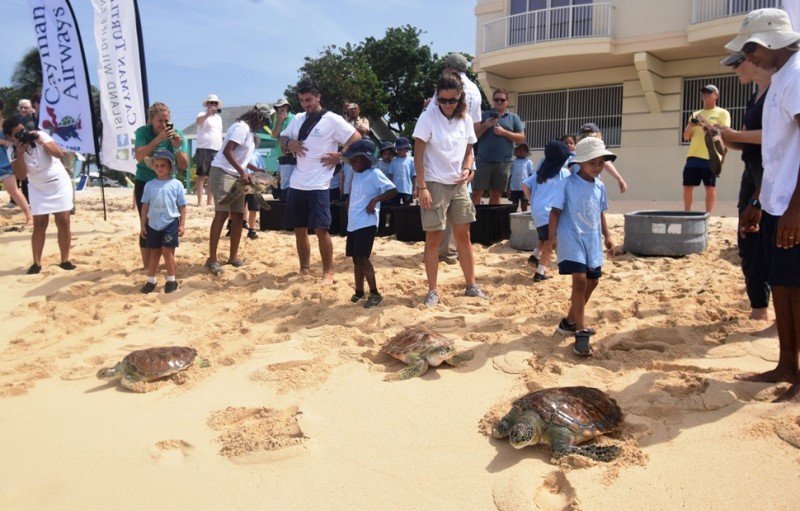Do not refresh or close this window.

Do not refresh or close this window.


Share
Oceans cover three quarters of Planet Earth - so much more than the land we are familiar with that it might have been a good idea to call it Planet Sea instead. Every year, World Oceans Day on 18 June helps us remember how important they are.
This year CTC marked the special day, by releasing into the ocean 20 head-started green sea turtles at West Bay Public Beach, and inviting members of the community and visitors alike to come and join in the celebrations.
This year’s World Oceans Day theme, “Preventing plastic pollution,” is just right for turtles, as the Centre’s Jerris Miller explained to a group of four and five year olds students who had come all the way from St. Ignatius School to take part in the release, plastic items are very dangerous to sea turtles because they often mistake plastic for food such as jellyfish, “So if you see any plastic items on the beach, or any kind of plastic – please pick it up,” he said.
“To date, the Cayman Turtle Centre has released over 31,000 turtles into the wild.” Mr. Miller said. He then went on to explain that, despite releasing so many turtles over the years, for a long time the Centre lacked the hard evidence needed to show that their efforts were truly effective. It takes more than twenty years for a turtle to mature, and although the population of Green Sea Turtles had been rising in the Cayman Islands, the Centre couldn’t be absolutely sure that was a result of their efforts. They had tried various kinds of tags, but mostly the tags came off after so many years. Then came a new way of tagging – using a kind of turtle genetic fingerprinting technique. The new system showed that more than of the genetic material of returning turtles was attributable to turtles originally released from the Centre, Mr. Miller said.
Mr. Miller also explained the idea of the Centre’s Head-Starting program, which keeps the baby turtles back, and lets them grow in a safe environment before letting them go. “When (in nature) the turtles hatch on the beach you get up to 100 turtles hatching out and scurrying to the beach – There are actually a lot of predators that feed of those turtles – snappers and barracudas for example, and it is estimated that only one in a thousand turtles survives to adulthood. (In contrast) these turtles are about 18 months to two years old, and have about a 60 percent survival rate.
St Ignatius Teacher, Tom Cripps, explained why the children were there. “They enjoy getting out and seeing things – and they have been very excited the last few days about coming to see this.” Five-year old Monroe said that she thought seeing so many turtles going into the sea would be, “Amazing.”
It was clearly a big thrill for most of the people there to see it – not only the children. Sybille Hansen from South Dakota was one: “We arrived last night. This was the big bonus of our trip” she said. I have read a lot about turtles, and to actually see a release into the ocean in a protected and safe way is marvellous – it’s just exhilarating,” she said.